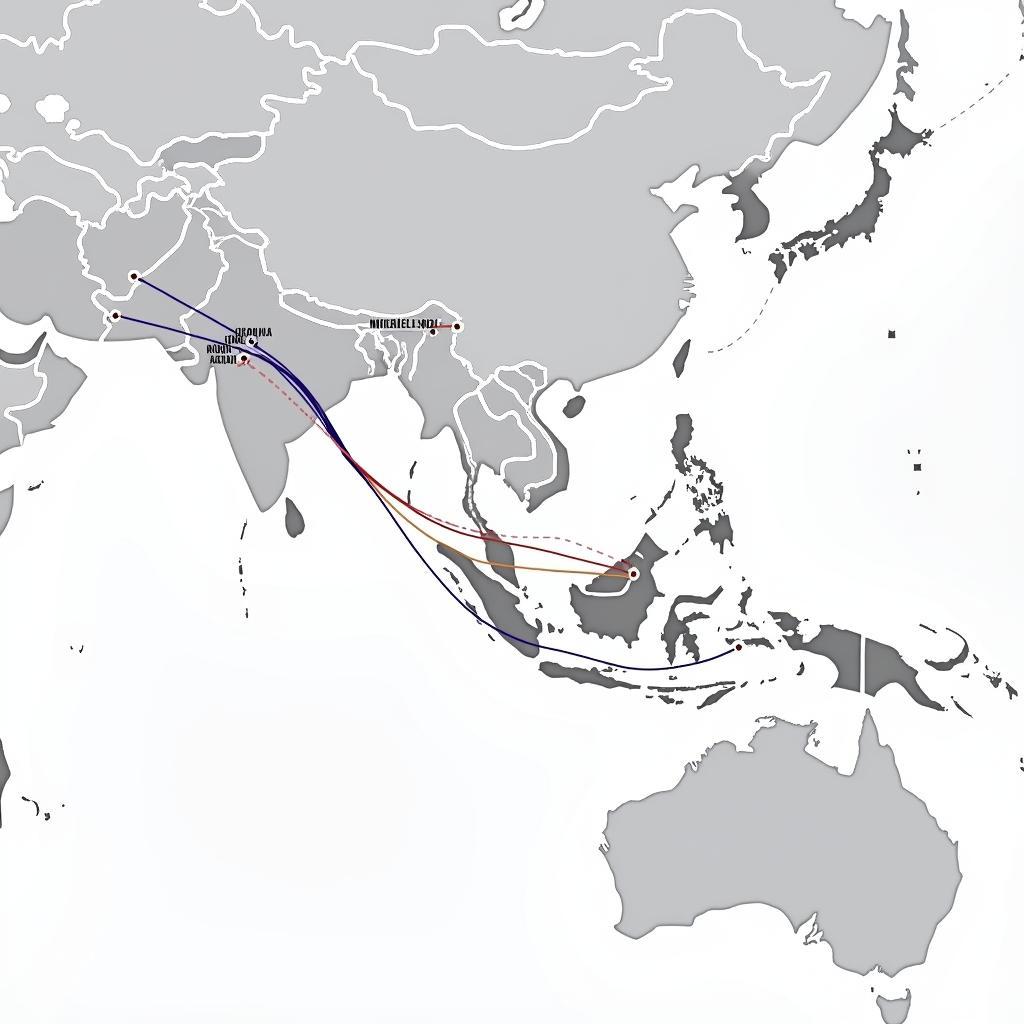The Association of Southeast Asian Nations (ASEAN) has made significant strides in fostering regional integration, and the Asean Casa initiative plays a crucial role in this endeavor. CASA, short for Comprehensive Air Transport Agreement, aims to liberalize air transport services among member states, paving the way for enhanced connectivity, economic growth, and people-to-people exchanges within Southeast Asia.
 Map of ASEAN with Air Routes
Map of ASEAN with Air Routes
The Genesis and Evolution of ASEAN CASA
The concept of ASEAN CASA emerged in the late 1990s, driven by the understanding that a more integrated aviation market would be vital for the region’s economic development. The agreement was officially signed in 2004 and has since undergone several phases of implementation, gradually expanding its scope and impact.
 ASEAN Officials Signing CASA Agreement
ASEAN Officials Signing CASA Agreement
Key Features of the ASEAN CASA Agreement
At its core, ASEAN CASA seeks to remove restrictions on air routes, capacity, and frequency for flights operated by designated airlines of member states within the ASEAN region. This liberalization promotes healthy competition among airlines, leading to more competitive airfares, increased flight options, and improved service quality for passengers.
Benefits of ASEAN CASA for Southeast Asia
The implementation of ASEAN CASA has ushered in a new era of air travel within Southeast Asia, resulting in a myriad of benefits:
- Increased Connectivity: The agreement has facilitated a surge in air travel options, connecting even the most remote corners of Southeast Asia. This enhanced connectivity has made it easier for businesses to connect with partners, for tourists to explore diverse destinations, and for families to stay connected across borders.
- Economic Growth: By promoting trade, tourism, and investment, ASEAN CASA has significantly contributed to the region’s economic growth. The increased flow of goods, services, and people has created jobs, boosted incomes, and stimulated economic activity across Southeast Asia.
- People-to-People Exchanges: Beyond its economic impact, ASEAN CASA has fostered closer ties among the people of Southeast Asia. Easier and more affordable travel options have allowed for greater cultural exchange, knowledge sharing, and the forging of lasting friendships, strengthening the sense of community within the region.
 Busy Airport Terminal in Southeast Asia
Busy Airport Terminal in Southeast Asia
Challenges and the Path Forward
While ASEAN CASA has made remarkable progress, challenges remain in fully realizing its potential. Addressing issues such as differing regulations among member states, infrastructure constraints, and the need for further capacity building within the aviation sector will be crucial for maximizing the benefits of this landmark agreement.
Conclusion: Soaring to New Heights
ASEAN CASA stands as a testament to the power of regional cooperation in driving progress and prosperity. By continuing to strengthen air connectivity, ASEAN is poised to unlock even greater economic potential and foster deeper integration among its member states, solidifying Southeast Asia’s position as a dynamic force on the global stage.
Frequently Asked Questions
1. Which countries are part of the ASEAN CASA agreement?
The ASEAN CASA agreement encompasses all ten member states of ASEAN: Brunei, Cambodia, Indonesia, Laos, Malaysia, Myanmar, the Philippines, Singapore, Thailand, and Vietnam.
2. How has ASEAN CASA impacted airfares in Southeast Asia?
The liberalization of air transport services under ASEAN CASA has led to increased competition among airlines, resulting in more competitive airfares for travelers within the region.
3. What are the future goals of the ASEAN CASA initiative?
Moving forward, ASEAN aims to further enhance air connectivity by addressing remaining regulatory barriers, improving infrastructure, and fostering greater cooperation among member states’ aviation sectors.
4. How does ASEAN CASA contribute to regional integration?
ASEAN CASA promotes regional integration by facilitating the seamless flow of people, goods, and services, fostering closer economic ties, and strengthening people-to-people connections across Southeast Asia.
5. Where can I find more information about ASEAN CASA?
For a deeper understanding of ASEAN CASA and its impact on Southeast Asia, visit the official ASEAN website or contact our team at Asean Media.
Need Assistance?
For any inquiries or support, please reach out to us:
Phone: 0369020373
Email: [email protected]
Address: Thon Ngoc Lien, Hiep Hoa, Bac Giang, Vietnam
Our dedicated customer support team is available 24/7 to assist you.
